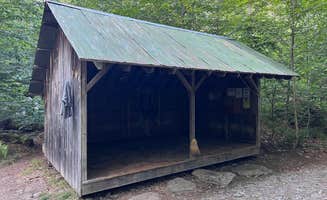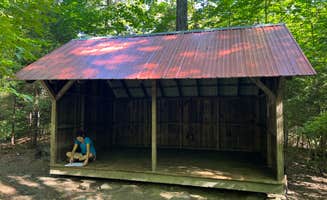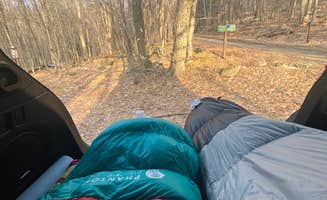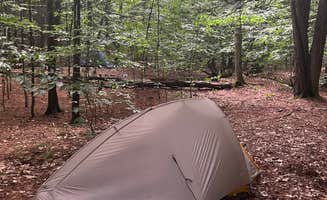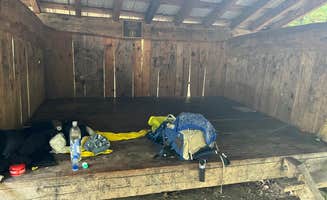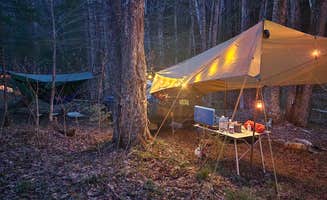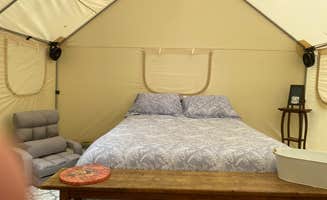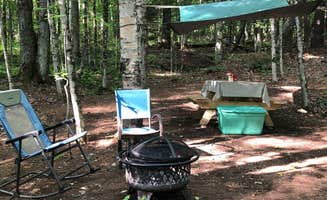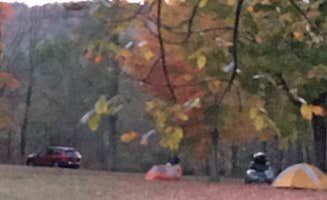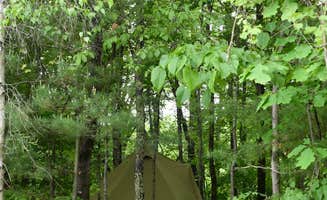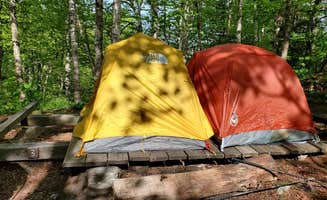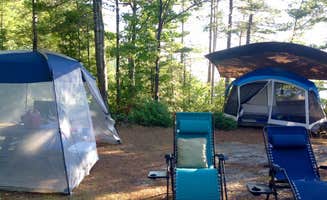Tent camping opportunities abound in the Green Mountain National Forest near Barnard, Vermont. Sites range from backcountry Appalachian Trail shelters to more accessible forest road dispersed camping. The area features elevations between 1,200 and 2,500 feet with numerous small streams and brooks that provide water sources during spring and summer months. Winter access becomes limited when forest service roads close due to snow accumulation typically from November through April.
What to do
Explore swimming holes: Michigan Brook offers several natural swimming spots during summer months. One camper noted, "I only explored a bit offtrail down the brook but found a decent swimming hole (could just barely submerge myself) to clean off a bit."
Venture beyond initial campsites: For better tent camping near Barnard, Vermont, drive deeper into Michigan Brook Road. "Drive in about a mile after the parking lot!! Can use car to get in! There's 3 camping spots. 1 before the bridge and 2 after the bridge! The one before the bridge that's right next to the river is the best one!!" suggests a Michigan Brook visitor.
Visit nearby towns: Camping at Michigan Brook Road provides access to local services. As one camper explains, "If you walk to the end of upper Michigan Brook road you will have cell phone service and a gas station along with a United States Post Office as well as a general store which also serves as a restaurant. There you can find just about anything."
What campers like
Shelter designs: The Happy Hill shelter offers unusual accommodations. According to one camper, "The shelter had a ground floor and a loft but each floor could maybe fit 4-5 people comfortably... The loft was nice since folks could decide to sleep up there while others were down below, either cooking, arriving, or departing." The Happy Hill Backcountry Shelter provides flexible options for hikers.
Stream access: Camping beside water ranks high among visitors to the best tent camping near Barnard. A camper at Last Light on Michigan Brook shared: "Love this site! The very last spot on the right hand side. If you've reached the closed gate you've missed the site!"
Bear boxes: Some Appalachian Trail shelters provide additional wildlife protection. A hiker reported, "There was also a bear box here, which I hadn't seen at other shelters along the AT in Vermont (heading southbound)."
What you should know
Road conditions: High-clearance vehicles are recommended for accessing many camping areas. "Road goes in pretty far. Some parts are muddy and very rough. Higher clearance would be advised!!!" warns a visitor to Michigan Brook Road Camping.
Water availability: Water sources at backcountry shelters are inconsistent. At Thistle Hill Backcountry Shelter, a hiker found "water during my stay, though it was right after a smaller storm the previous evening."
Winter access limitations: Snow significantly impacts camping options. One winter camper reported, "I attempted to bring my car and was stuck overnight but was able to dig myself out the next morning." Forest service roads are not maintained during winter months.
Tips for camping with families
Choose established sites: For families seeking tent camping near Barnard, Vermont, established forest road sites offer better access. A camper at Bingo Brook noted, "Couple of spots along the forest access road. Beautiful stream close by," making it appropriate for children who enjoy water play.
Pack all supplies: No services exist at most camping areas. "This area is open for camping year-round but probably only accessible in Spring through early Fall because the dirt road is not plowed," reports a Michigan Brook visitor, highlighting the importance of bringing all necessities.
Consider proximity to attractions: Some sites serve well as base camps. "I liked this camping area for it's accessibility to Killington, VT and it was of course free!" notes a camper, making Bingo a practical option for families planning day trips.
Tips from RVers
Size limitations: Most dispersed sites accommodate only smaller recreational vehicles. Narrow forest roads with tight turns restrict access for larger RVs beyond the initial parking areas.
Bridge crossings: When camping along Michigan Brook, evaluate bridge stability before crossing. "The area is big enough to bring an RV if you can get it down the dirt road," reports one camper at Velvet Rocks Shelter, though most recommend smaller vehicles.
Leave no trace: Maintain site cleanliness for future visitors. "Keep it clean!" reminds a Last Light on Michigan Brook camper, highlighting the importance of proper waste disposal in these unmanaged areas.


